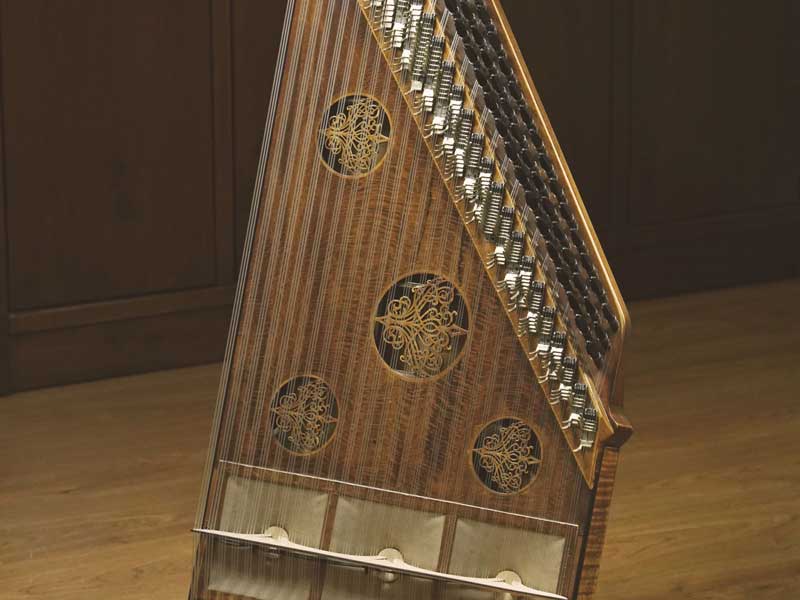The Kanun has been known in Greece since ancient times. Its name probably comes from the canon, the experimental monochord of Pythagoras, while it is also known as a triangle, epigonium or chantry (psalterion). The origin of the instrument can be traced to the Asian area, many centuries before the ancient Greek classical times. There are written testimonies about the psaltery or epigonium in ancient Greece, however the absence of its illustration does not allow us to ascertain the relationship of the ancient Greek psaltery with the modern kanun. In Byzantine times, on the contrary, both the illustrated manuscripts and the wall paintings in churches give us a lot of information about the psaltery, a musical instrument in the shape of a triangle or a trapeze, as well as the way it was held and played.
The kanonaki is a plucked string instrument with plastic strings, trapezium-shaped and played with two pens that are attached to the index fingers with metal thimbles. It is also a useful aid for learning intervals related to the oral musical traditions of the south-eastern Mediterranean idioms.
Kanun seems to have either a leading or accompanying role in musical idioms of greater Thrace, Constantinople, Asia Minor, Macedonia and other regions of Anatolia and the Arab world.
